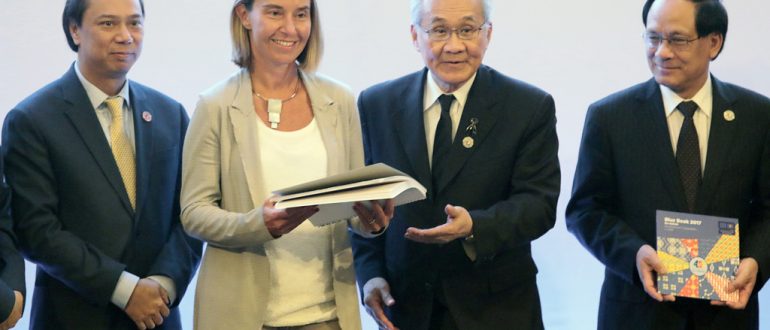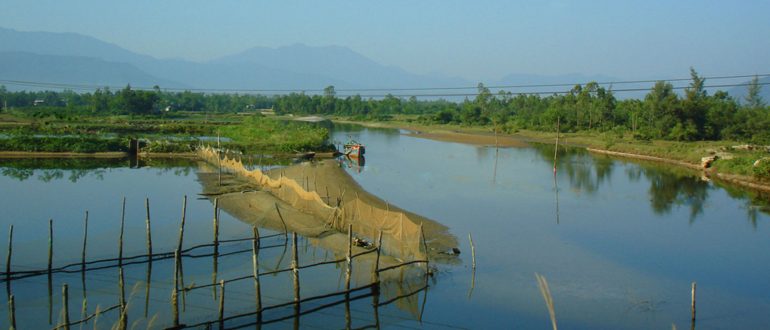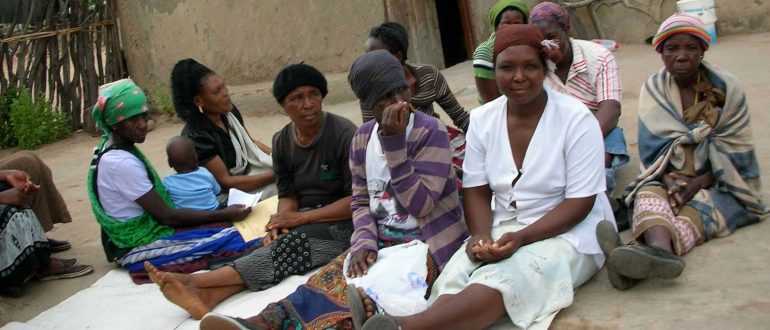Noble Credits: False Hope and True Despairs – On the Political Economy of Microcredit
The disbursing of small credit amounts is hailed as prime pathway out of poverty. But is it really? The case for their high interest rates is poor, the claim of high repayment rates doubtful. I found many former customers entrapped in a vicious cycle of loans. Lastly, micro-credit loans played their part in changing the consumption pattern of rural people, and, in passing, reshaped their life style by integrating them with the international capitalist system.
Bangladesh Bank’s order to sack Professor Yunus from the post of managing director of Grameen Bank (GB) has already produced a lot of controversies and outcries. A series of people including Mr. Yunus himself has opposed to the decision of Bangladesh Bank. Yunus has gone to the court, but the court stayed with the order. Challenging the court order, he has gone for an appeal. Parallel to the ongoing legal procedures in the court, criticism of the government’s move to remove Yunus from GB is still on, with a lot of people from different NGOs, opposition parties and global ruling elites opposing the decision and extending their hand in solidarity with Professor Yunus as well. However, we have not yet seen any protest from the receivers of micro-credits, the poor Bangladeshi women, who are thought to be the main ‘beneficiaries’ of Professor Yunus’s activity. Furthermore, now there are some newspaper reports that the Grameen Bank has initiated a signature campaign to keep Yunus as the managing director of the Bank and made it mandatory for the loan-receiver to sign the paper. What a disgraceful situation! Yunus is said be the savior, the ‘Messiah’ of Bangladeshi poor women. He has empowered them, brought them out of the curse of poverty, and so on! When a hero of them faces such a humiliation, it would be very natural for them to stand up for him. They really have not protested the ‘humiliation’ of such a noble, great and honorable person! What went wrong then!?
Let’s consider micro-credit as such. Look at the size of loan: Generally, it is 100-200 US dollars per person at a time. On some occasions, it goes up to 1000 US dollars; and, because of the size of the loan, it is called micro-credit: “The most common microfinance product is a micro-credit loan – usually less than US$ 100. These tiny loans are enough for hardworking micro-entrepreneurs to start or expand small businesses such as weaving baskets, raising chickens or buying wholesale products to sell in a market.”[1] In addition, “The global repayment rate for micro-credit loans is higher than 95 percent, which allows MFIs to re-lend these funds to even more clients. By giving the world’s poor a hand up, not a handout, microfinance can help break the cycle of poverty in as little as a single generation.” The paper is also saying, “A large bank (big lender) can charge anything over 14 percent to recoup its costs, whereas the MFI has to charge a rate of at least 31 percent to cover its costs.”
They explain that the higher charges are due to higher administrative costs of micro-credit loans. They also note “that although MFIs may charge rates of 30 to 70 percent to cover their costs, these interest rates are still significantly lower than the 300 to 3000 percent annual rates that many borrowers were previously paying to money lenders.”
First, one should notice that micro-credit is compared to individual lenders (who are in general a story of the past). They are forgetting the fact that interest free borrowing (even with negative interest rate if you take inflation into account) also exists in Bangladesh and across other parts of the world. However, this borrowing is on an individual level – Grameen or any other micro credit institution cannot be asked to do that simply because individuals have no administrative costs for the loan, banks have. So, comparing micro-credit to personal lending is completely wrong, but done to legitimizes the high rates of micro-credit interest. They are also rationalizing the higher interest rates by claiming higher administrative costs. However, they forget that this claim also shows their lower level of efficiency in terms of financial management.
The micro-creditors have always been praised for their high repayment rates. However, there are no reliable audit reports to justify their claims. But some sources indicate otherwise: Different documentaries show that the loan-recovery section of micro-creditors needs to pressure the poor receivers harshly for loan repayment. They don’t repay the loan happily after making profits as it is depicted in the brochures of micro-credit propagators. I have met and interviewed personally a large number of micro-credit customers. I found that a large portion of poor people have temporarily migrated to Dhaka to earn and repay the micro-credit loans. A good number of them are also taking loans from different NGOs and repaying one loan from that of another. They are entrapped in a vicious cycle of loans. Independent studies also support these findings: The chair of the PKSF, the regulatory body of micro-credit in Bangladesh, Professor Khallequzzaman in an interview explained how the poor often take up loans without consideration of the consequences and that 60% of borrowers take loans from several sources. “There is no understanding that it might take 10 or 20 years to repay their loan,” he says[2].
Furthermore, from the weekly repayments, some lenders deduct 10% for compulsory saving schemes, which the company uses to lend other people. “Interest on repayments begin at around 15%, but it is a flat rate and can soon rise to anything between 40% and 100%,”[3].
There are some controversies over the repayment ratio as well. Some studies suggest that micro-credit lenders hide bad loans and do different types of adjustments to show them as repaid. In 2001, the Wall Street Journal’s Daniel Pearl and Michael Phillips revealed that the repayment rate of their loans isn’t anywhere near what the bank claims, that at least one quarter of its loans were being used for consumption, that the bank delays defaults and hides problem loans, that the bank isn’t subject to any kind of serious supervision, public or private. The government owns 6% of its assets, while the rest is only superficially owned by borrowers who cannot sell or trade their stock.[4]
Now you can rethink the success stories. The sizes of loans that micro-credit operates with allows people to be engaged in basic types of entrepreneurships that always have a low margin of profit. The rate of profit generally does not exceed 20%, which is even less than the interest rates of micro-credit. Our question is how can the borrowers then repay their loan as well as alleviate their poverty by this small loan with such a high interest rate? An answer could only be negative. Therefore, it is no surprise that many observers see a big portion of the credit consumed rather than invested in an income-generating activity. Then why is micro-credit so much appreciated in the western media and global power elite?
In fact, the whole the agendum of micro-credit including its philosophy, mode of operation and outcomes are admirable to power elites of neo-liberals. Let us take its philosophy, for example – micro-credit sees poverty as a problem of the individual, offers a solution for individual and propagates individual success stories. Look at the phrase ‘hard working micro entrepreneurs’. If you work hard, you will be no more among the poor. Whatever happens on the macro-level. Let the privatization go on, let the prices of daily essentials go high, let all the services like education, health, water, electricity, gas, everything fall in the hands of some companies and let all the other neo-liberal agenda move on with pace. There is nothing to change on the macro-level, there is no collective responsibility, and market helps those who help themselves.
The same voice is echoed from the Microcredit summit in Washington, DC, in February 1997. Mr Yunus suggests, that “microfinance recognizes that each person rich or poor, is a potential entrepreneur who can thrive if given the opportunity to explore his or her economic potential.”[5]
Further, as McDermott argues, microfinance programs allow “enterprising individuals to supply goods or services to the market that they will earn a profit after paying off their debt, giving them the opportunity to buy additional goods and services. Ideally the lender earns a profit as well, which (sustains) the whole system. This process fits with neoliberal economic values that rely solely on supply and demand systems to maintain equilibrium.”[6]
Now we can come to their mode of operation: Micro-credit loans are said to be given without collateral. But loans are generally handed out to a group comprising 5 to 20 people, individually responsible for the debt of the whole group. If anyone of the group is a defaulter then every member of the group is responsible for that part. As all group members cannot flee simultaneously, the group serves as collateral. All risk of the group rests on that individual. As explained earlier, micro-creditors argue that their rate of interest is higher because of higher administrative cost. So, poor people are even paying for the NGO staffs who manage the programs. Furthermore, now only three institutions Grameen, BRAC and ASA are controlling about 80% of micro-credit in Bangladesh, and they are quite big organizations that have other businesses as well. They sell their products on condition of paying back in installments. Thus, their businesses are getting ready consumers: Markets are expanding. Another point has to be noted here – as with micro-credit, Professor Yunus is also the pioneer of the introduction of international capital to the poor people. Its Grameenphone project is a good example of that. Credit goes to Mr. Yunus who has successfully displayed the arming of poor village women with information technology as empowerment. This shows how the whole operation of micro-credit is in line with capitalist globalization and neoliberal economic values.
Now, micro-credit institutions are focusing more and more on developing their business enterprises. It is no exception that Mr. Yunus is very much interested in his social business ideas. Even the social business idea is integrating the international capital with the local one. A good part of the loans has been used for direct consumption of different commodities, which were not even very familiar with the rural culture. Nowadays, Coca-Cola, Pepsi, Shampoos of different brands, lipsticks etc. are no strangers in rural life. The micro-credit loans played their part in changing the consumption pattern of rural people, and, in passing, reshaped their life style by integrating them with the international capitalist system. In the days of economic stagnation in the Western world, or the center of the capitalist economy, idle capital is by this getting some opportunity to get in operation. Therefore, the whole outcome is very much in line with the needs of global capitalism.
Rubel Abul Hassan
Bibliography
Esmail, Zahra (2008): “Neoliberal Development: The Impact of Microfinance on Poverty Alleviation”, Canadian Journal of Globalization, 1:1, pp. 10-16 , online at: http://cjog.ca/CJOG_files/cjog_esmailv1n1.pdf, accessed 15.06.2011.
James Melik (2010), “Microcredit ‘death trap’ for Bangladesh’s poor”, BBC World Service, online at: http://www.bbc.co.uk/news/mobile/business-11664632, accessed 15.06.2011.
Daniel Pearl and Michael M. Phillips (2001), “Grameen Bank, Which Pioneered Loans For the Poor, Has Hit a Repayment Snag”, Wall Street Journal, online at: http://online.wsj.com/public/resources/documents/pearl112701.htm, accessed 15.06.2011.
UNITUS (2011), “Microfinance, an Innovative Solution for Poverty Alleviation”, online at: http://www.binaswadaya.org/index.php?option=com_content&task=view&id=129&Itemid=38&lang=in_ID, accessed 01.07.2011.
[1] This and the following quotes are from an exemplary mainstream microfinance institution, UNITUS (2011), “Microfinance, an Innovative Solution for Poverty Alleviation”, online at: http://www.binaswadaya.org/index.php?option=com_content&task=view&id=129&Itemid=38&lang=in_ID, accessed 01.07.2011.
[2] James Melik (2010), “Microcredit ‘death trap’ for Bangladesh’s poor”, BBC World Service, online at: http://www.bbc.co.uk/news/mobile/business-11664632, accessed 15.06.2011.
[3] ibid.
[4] Daniel Pearl and Michael M. Phillips (2001), “Grameen Bank, Which Pioneered Loans For the Poor, Has Hit a Repayment Snag”, Wall Street Journal, online at: http://online.wsj.com/public/resources/documents/pearl112701.htm, accessed 15.06.2011.
[5] McDermott, Paula (2001), cited in: Esmail, Zahra (2008): “Neoliberal Development: The Impact of Microfinance on Poverty Alleviation”, Canadian Journal of Globalization, 1:1, pp. 10-16 , online at: http://cjog.ca/CJOG_files/cjog_esmailv1n1.pdf, accessed 15.06.2011.
[6] Esmail 2008.



